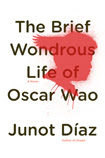I was kinda bummed to see the PW Best of 2006 critics poll. I contributed to it, thinking that we’d each have our own lists in there as well. Maybe I didn’t read the instructions close enough. No big deal, but I feel totally disconnected from it as it stands, so I thought I’d post the list I made in a slightly revised form, at the very least to promote the books I really believe in. As for their list, I just don’t get it. The Bechdel book I found pretentious, overwrought, and really poorly drawn, and Scott Pilgrim is cute teen stuff, that I guess cute teenagers like, but…huh? McCloud? Lost Girls? Ugh, don’t get me started.
And while I’m bumming your trip, I heartily suggest everyone read Gary Groth’s essay on the book Eisner/Miller in the current Comics Journal. It’s an excellent piece of criticism that goes to the heart of the problems with contemporary comics criticism and historical writing (and dimly relates to how, in any sort of sane world, Fun Home and Scott Pilgrim could rank above Kim Deitch and Carol Tyler). It also pokes further holes in the Eisner legend, which is an ongoing “hobby” of Gary’s, and one which I fully support.
My faintly revised list:
1. Shadowland by Kim Deitch (Fantagraphics)
Another masterpiece from Deitch, who, more than any other cartoonist working today, is in full control of the medium. This tragi-comic yarn is moving, terrifying and deeply deeply awe-inspiring. The man is a national treasure.
2. Late Bloomer by Carol Tyler (Fantagraphics)
Released at the very end of 2005, too late for best-of lists, Late Bloomer towers over 2006. Tyler’s timeworn but eloquent voice is much needed in comics. Late Bloomer is that rare thing: a wise book. Neither pretentious nor showy, it is full of insight, perfectly drawn, and one of the few to insist on truth above all else. A risky, bold work of art and indisputably the best book of 2006.
3. Or Else 4 by Kevin Huizenga (Drawn and Quarterly)
Kevin’s epic attempt to explain the universe on a micro level was a moving and humbling comic—expansive in scope and filled with the good-natured love and nimble curiosity that marks his work.
4. Girl Stories by Lauren Weinstein (Henry Holt)
Weinstein’s book is perhaps the most important of the year for widely introducing a unique voice. Like Tyler, Weinstein comes at comics from the outside and has none of the baggage and stylistic tics that plague so many others. Hers is a clear, funny and humane voice and together with her gorgeous, evocative linework, it makes her a compelling talent.
5. The Squirrel Mother by Megan Kelso (Fantagraphics)
A wonderful collection of short stories by Megan Kelso. Pitch-perfect cartooning and closely observed tales of family, history and America make this a gem-like volume. Kelso is certainly one of our finest cartoonists.
6. Lucky by Gabrielle Bell (Drawn and Quarterly)
Bell has a wicked ear for dialogue and draws some of the most nuanced body language in comics. Her first book of mature work displays her talents to great effect. Despite the familiarity of the subject matter—20-something ennui—Bell makes it all new again with her eye for detail.
7. A Last Cry for Help by Dave Kiersh (Bodega)
This is a hilarious comic book version of a 1970s teen sex romp. Genuinely erotic in parts and always funny, Kiersh’s book is a delight.
8. Ghost of Hoppers by Jaime Hernandez (Fantagraphics)
Jaime remains the king of understated emotions and concise cartoon language. This wonderful book about hitting middle age and letting go of old memories is one of his finest works.
9. Ed the Happy Clown by Chester Brown (Drawn and Quarterly), even in reprint form, demands respect. His liner notes and stellar covers make this re-serializing qualify as a “new book”. It provides an unparalleled insight into one of our most important artist’s feelings about his crucial work both then and now. More than just history, it feels like Brown asserting and reconstructing his identity as a cartoonist.
Reprints:
It’s been a great year for them. My favorites are Jeet Heer and Chris Ware’s superlative Gasoline Alley series and Dark Horse Comics’ Magnus Robot Fighter. About as far apart on the spectrum as you can go, but why not? Frank King and Russ Manning both understood body language and space extremely well, but put it in service to, um, very different content. Drawn and Quarterly’s Moomin book and Tatsumi series are also favorites, as well as Fantagraphics’ Popeye book.
Notes:
Despite all the interest and activity from major publishers, this year once again demonstrates the virtues of small, brilliant publishers like Drawn & Quarterly and Fantagraphics. Nurturing unique artists, growing with them, and releasing quality work remains the best (and oddly unique to these two companies!) business model. All the hype and money in the world can’t beat it.
And, I’d be remiss as a publisher and a critic if I didn’t mention Ninja by Brian Chippendale (PictureBox). I know it’s rather rude to put my own book on the list, but it’s how I really feel. In terms of formal daring and drawing, no other book this year has gone further with such success. Chippendale, like Gary Panter before him, uses drawing as a form of expression, turning comic visuals into a multi-layered medium for real mark making. His long form meditation on urban life, gentrification, war, friendship and violence is moving and profound.















